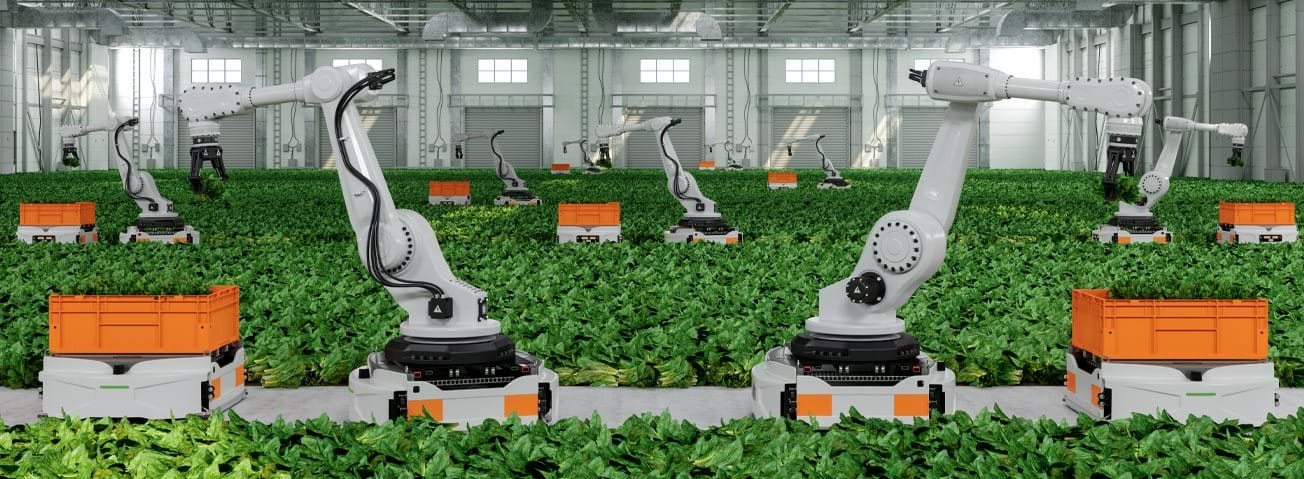U.S. Agriculture Production Grew Steadily From 1948 to 2021 as Productivity Increased

From 1948 to 2021, U.S. agricultural productivity increased at an annual rate of 1.49 percent. To arrive at this rate, USDA, Economic Research Service (ERS) calculates total factor productivity as a measure of the difference in the rate of growth of total output relative to the rate of growth of total inputs. Total output includes crops, livestock, and livestock products. Inputs comprise the factors of production—land, labor, capital, and intermediate inputs (such as fertilizer, pesticides, energy, and purchased custom services). Growth in total factor productivity accounts for the part of output growth that cannot be explained by total input growth.
According to U.S. agricultural productivity statistics maintained by ERS, total output increased at a rate of 1.46 percent per year in the past seven decades, while the growth rate of total inputs declined 0.03 percent per year. The result is that farmers were able to produce more with less. From 1948 to 2021, the amount of land and labor used for farming declined at annual rates of 0.45 percent and 1.93 percent, respectively. Meanwhile, the use of durable capital equipment increased at an annual rate of 0.95 percent, and intermediate inputs increased at a rate of 1.01 percent per year. With a larger cost share in the use of labor and land combined on average, the total input use declined slightly over that period.
The primary driver behind agricultural productivity growth has been technological progress from innovations associated with new knowledge, processes, and systems that convert inputs into outputs in farming. Improved seed varieties, genetic enhancements in livestock, advanced equipment and machinery, and more effective fertilizers and pesticides are all examples of technological progress. Also playing a role are structural changes that create scale advantage and substitution of labor with capital, and managerial efficiency that enables producers to combine various inputs to produce the most total output.
As the chart below shows, U.S. total factor productivity growth fluctuates from year to year, reflecting transitory events such as unfavorable weather or energy shocks. Nonetheless, productivity tends to return to its long-term trend growth after short-term reductions.
Improved agricultural productivity means the U.S. agricultural sector can compete more effectively with global competitors without reducing farm profits. At the same time, land and labor can shift to uses in other sectors of the economy. Finally, improved agricultural productivity may benefit consumers in the form of lower prices.
Measurement of Output, Inputs, and Total Factor Productivity in U.S. Agricultural Productivity Accounts, by Sun Ling Wang, Richard Nehring, Roberto Mosheim, and Eric Njuki, ERS, August 2024
Agricultural Productivity in the United States, by Sun Ling Wang, Eric Njuki, Richard Nehring, and Roberto Mosheim, USDA, Economic Research Service, November 2024
Farm Labor, Human Capital, and Agricultural Productivity in the United States, by Sun Ling Wang, Robert A. Hoppe, Thomas Hertz, and Shicong Xu, ERS, February 2022
Sources, Trends, and Drivers of U.S. Dairy Productivity and Efficiency, by Eric Njuki, ERS, February 2022
Agricultural Productivity Growth in the United States: Measurement, Trends, and Drivers, by Sun Ling Wang, Paul Heisey, David Schimmelpfennig, and Eldon Ball, USDA, Economic Research Service, July 2015


